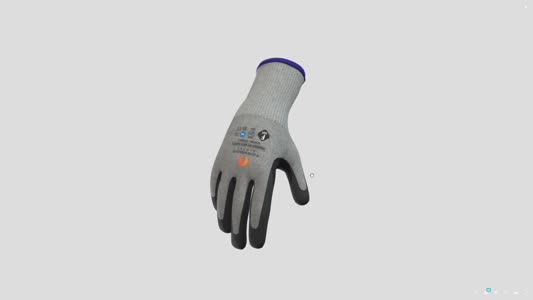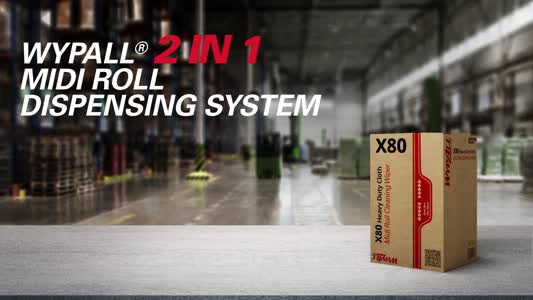
 |
Mark Sennett
Managing Editor |
 |
Kelly Rose
Editor |
| Home> | Breathing Safely | >Respirators | >Safer highways |
Safer highways
12 August 2020
Respirable Crystalline Silica (RCS) is one of the most common naturally occurring elements on the planet. Found in the earth’s crust, crystalline silica is a key component of sand, granite and other naturally occurring minerals. George Elliott takes us through the dangers of RCS, how employers can reduce exposure and types of respiratory protective equipment (RPE) to consider for protection from silica dust.
THERE ARE three main types of crystalline silica; quartz is the most common, followed by cristobalite and tridymite. Crystalline silica can be encountered in a number of industries including road construction, mining, quarrying, stonework, tunneling, glass and ceramic manufacturing and foundries. Any abrasive activities that cut, chip, drill or grind can result in dangerous RSC dust being expelled in the working environment.
According to the Health & Safety Executive (HSE), respirable crystalline silica is the second biggest risk to construction workers. Exposure to silica dust can cause many health implications including a range of respiratory diseases including silicosis, chronic obstructive pulmonary disease (COPD), lung cancer, bronchitis and emphysema.1
Seven things you should know if you work with silica dust
-
Respirable crystalline silica is present in materials that road construction workers work with. Cutting, sanding and sweeping makes crystalline silica airborne, creating deadly RCS.2
-
Exposure to large amounts of RCS can be life threatening in a short period of time as a result of acute silicosis.3
-
Exposure to RCS over a prolonged period of time can cause deadly fibrosis of the lung tissue, lung cancer and COPD. 3
-
What you can’t see can hurt you. In most light RCS particles are too fine to be seen by the naked eye.
-
It doesn’t take much dust to do damage. Even small amounts of RCS can do damage, particularly over prolonged periods of exposure. As a result the HSE’s workplace exposure limit is 0.1mg.m3 over eight hours.3 As a comparison, general respirable dusts have a workplace exposure limit of 4mg.m3 over the same time frame.
-
Control silica dust at its source. Choose tools with adequate and suitable dust extraction and/or water suppression.
-
Even with other control measures the HSE would expect wearers to have respiratory protection to a minimum of an Assigned Protection Factor (APF) 20. In certain circumstances an APF of 40 may be required.
4
What are the risks of being exposed to silica dust?
Awareness of the dangers posed by breathing in RCS is increasing but still many workers do not fully understand health risks of RCS exposure. Respirable crystalline silica can cause irreversible fibro-cardiovascular diseases such as silicosis, cancer and even pulmonary tuberculosis. Silicosis in particular is incurable so workers who are exposed to silica are at risk.
Symptoms:
Often symptoms of silicosis can take up-to 15 years to occur so it is important that workers are aware of what these may be so they know what to look out for:5
-
Debilitating shortness of breath
-
Loud cough
-
Feeling of weakness
-
Weight loss
-
Chest pains
-
Night sweats
How employers can reduce exposure to silica dust
In accordance with the Control of Substances Hazardous to Health Regulations 2002 (COSHH),6 it is mandatory for all employers to assess and implement measures to protect workers against the exposure of RCS. Following a thorough risk assessment, if RCS is detected employers should find out how much silica workers are exposed to and arrange for the appropriate control measures to reduce the risk to their health.
If the silica hazard cannot be eliminated completely other preventative/control methods should be considered before work starts. Substituting silica containing materials for less hazardous (non silica containing) materials may be a consideration, however this substitution may not always be possible.
If Silica containing materials are used, then engineering controls should be considered and implemented to reduce the dust getting into the air. Typical methods include water suppression and on tool extraction. Further information on these control measures can be found via the HSE6 and the Construction Dust Partnership7.
Administration controls should also be considered. This could include setting up barriers to prevent workers not actively participating in the activity from coming into contact with the RCS being produced.
Even with all of the aforementioned control measures, the HSE still require respiratory protection to be worn when the respiratory hazard is RCS. A minimum APF of 20 is required and in certain circumstances an APF of 40 may be required6.
Selecting the right respiratory protective equipment
Respiratory protection provided must not only be adequate in terms of protection but also suitable for the wearer, task, working environment and compatible with other items of protective equipment.
A variety of respiratory protective equipment can provide an APF of 20. Filtering face pieces with a rating of FFP3 can provide this level of protection. These respirators can come in a variety of shapes and sizes and can be convenient for the highways industry as they are disposed of at the end of the activity/shift - avoiding any storage, cleaning or maintenance.
Reusable half mask respirators with P3 filters can also provide an APF of 20. The mask itself can be cleaned after use and reused, with the filters being the replaceable, consumable element. Reusable respirators often come in a range of sizes and can also accommodate gas and vapour filters as well as particulate filters.
Such filtering face pieces and reusable respirators should only be worn by those with a clean-shaven face underneath the seal as facial hair will negatively influence the fit of the respirator. In addition, these types of tight-fitting respirators need to be face fit tested to validate that the product fits the wearer.
If tasks require a higher level of protection (APF40) then powered air systems may be suitable to consider. These are coupled with headtops of various types but generally it is loose fitting headtops which are considered.
Loose fitting headtops are also beneficial as they do not require a face fit test, can be worn by those with degrees of facial hair and can combine other items in PPE into one for greater compatibility. For example, the Versaflo M-306 headtop by 3M can provide combined respiratory, head, face and hearing protection in an all in one solution. The Versaflo M-306 is often paired with the Versaflo Powered Air Turbo TR-300+ by 3M and together an APF of 40 can be achieved.
Education is key
Awareness of the dangers posed by breathing in RCS is increasing but still many workers do not fully understand health risks of RCS exposure. Employers and employees must fully understand the impact that even the most miniscule amount of silica dust can have on health and take the appropriate steps to protect staff and themselves with the correct protective equipment.
References
-
http://www.hse.gov.uk/construction/healthrisks/cancer-and-construction/silica-dust.htm
-
https://www.citb.co.uk/about-citb/partnerships-and-initiatives/construction-dust-partnership/
George Elliott is senior application engineer for the Personal Safety Division at 3M. For more information, visit www.3M.co.uk
- Double protection at half the price
- Channel of resources
- Silica Dust: Say RPE not RIP
- Constructing a safe workplace on site
- Free webinar on how to improve PPE compliance
- Simple solutions on show
- The future of full face innovation from 3M
- Advanced protection coverall
- Guiding you in the right direction
- Comprehensive portfolio
- Disposable respirator offers durability
- Respiratory protection urged
- Welding talk
- Combo passes fit test
- Double protection at half the price
- 3M advanced three-panel design optimises comfort
- Flexible fit disposable respirator
- 3M Pioneers advanced disposable respiratory protection technology
- Respiratory & personal protection
- Latest respirators























